
To help you run a successful, harmonious salon, we’ve gathered some actionable advice on salon staff management you can start implementing right away.
The long-term success of your salon depends on the strength of your team. That’s because they’re the ones interacting with your clients, which makes them the face of your business.
For your team to provide excellent customer service, it’s crucial that they feel comfortable in their roles. And as their manager, it’s your duty to ensure that they feel supported and that they are fully equipped to do their jobs successfully.
But with 48% of salon owners reporting that staff management and motivation are the most challenging part of running a salon, it’s clear that’s easier said than done.
To help you run a successful, harmonious salon, we’ve gathered some actionable advice on salon staff management you can start implementing right away.
Let’s dive right in with our first tip.
Clearly defined rules and expectations keep everyone on the same page and help your business run smoothly.
If your team knows exactly what’s expected of them, you won’t have to spend as much time guiding and correcting them. At the same time, your employees will feel more confident doing their work knowing what is expected of them in every situation.
Establishing a set of rules that applies to every team member ensures consistency in the quality of service.
Furthermore, setting expectations gives you room to grow because when everyone is clear on the basics, it’s easier to focus on the finer details of running the salon.

Source: SlidePlayer
However, articulating clear rules and expectations isn’t always easy so try to devote enough time to this exceptionally important step and be as detailed and clear as possible to avoid confusion and misunderstandings.
A great place to start is articulating some basic etiquette rules for your salon employees, such as:
After you’ve communicated the basic rules of conduct, go into further details to explain each one.
For instance, consider the last point regarding communication with the client. You can expand on that by providing example questions to ask the client and some instructions on how to give personalized product or treatment recommendations.
Being as detailed as possible when setting expectations is crucial because vague expectations create fertile ground for mistakes and confrontation.
Furthermore, your team won’t know whether they’re improving if you don’t define measurable goals to benchmark their work against.
Another good idea is to try to work out a system that all of your staff can use and understand easily.
For example, say you wanted to raise additional service sales. In that case, you could create a table that enumerates the additional services you offer and details your goals and expectations in terms of time and money.
That way, rather than simply telling your team they need to increase additional service sales, you’re telling them which specific services need a boost, by how much and in what timeframe.
Here’s what that table might look like:

Source: Zoyya
By implementing a system like the one above, your team understands exactly what is needed of them and how to achieve it.
Managing your staff can be chaotic if everyone is forced to make their own decisions about what course to take every step of the way.
With a clear set of instructions and expectations you’re actually eliminating mistakes and conflict before they ever arise.
When choosing employees for your salon, you naturally look for candidates that already have a set of skills required for the job. Even so, once the new hire joins your team, they will require onboarding and training on the services, techniques, and procedures unique to your salon.
And it doesn’t end there. After all, beauty trends and techniques constantly change and evolve, so ongoing training is necessary to stay competitive.
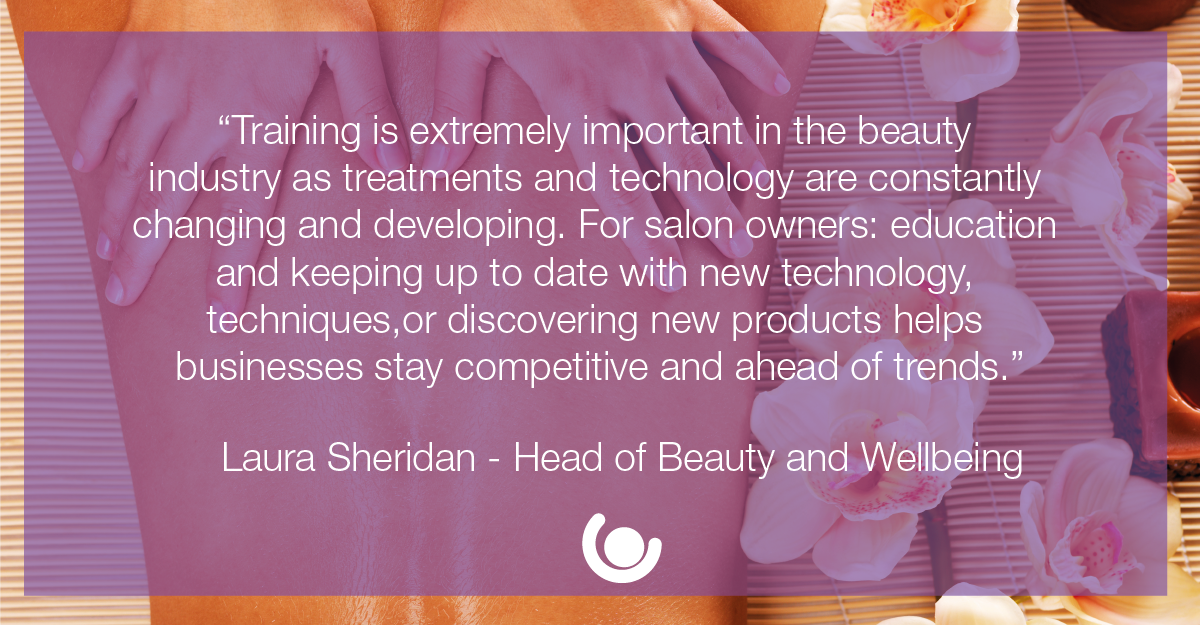
Source: TheTrainingRoom
To make sure you’re always giving your employees the highest possible quality education, you’ll need to create a standardized in-house training program.
There are many benefits to standardizing your employee training program, and you can check out some of them below:
Sounds good, right?
But it gets even better. Through training, your employees become experts that can easily meet and exceed your client's expectations.
And having satisfied clients means more bookings, so your salon's profit increases too! In fact, businesses with comprehensive training programs see a whopping 24% higher profit margin.
Now, to put theory into practice, what should your training program include?
First, you want to ensure everyone handles all of the equipment correctly. A beautician is only as good as her tools and proper equipment handling is crucial for safety.

Source: Bllashes
For example, just consider the tweezers used by lash technicians. Using it requires some training and mistakes in the lashing process can even result in eye injuries.
Also, your staff needs to have an in-depth knowledge of all the procedures, techniques, and different products and ingredients you use. So devote enough time to demonstrate how every procedure is done and allow enough time for your staff to practice under your supervision.
Proper training goes even further than that. Your employees also need to think beyond their workstations.
Understanding what their coworkers do and possessing sufficient knowledge about how your salon works overall enables your team members to better handle various challenges and surprises that come their way.
That includes training on administrative duties and sales techniques.
If your employees are expected to sell products for home treatments, membership models, or upsell additional services, they might be insecure about how to approach it without proper training.
Not everyone is a natural at selling, but it’s a skill that can be learned. To help you and your team out, here are some great pointers from salon owner Kati Whitledge to turn your team into top sellers:
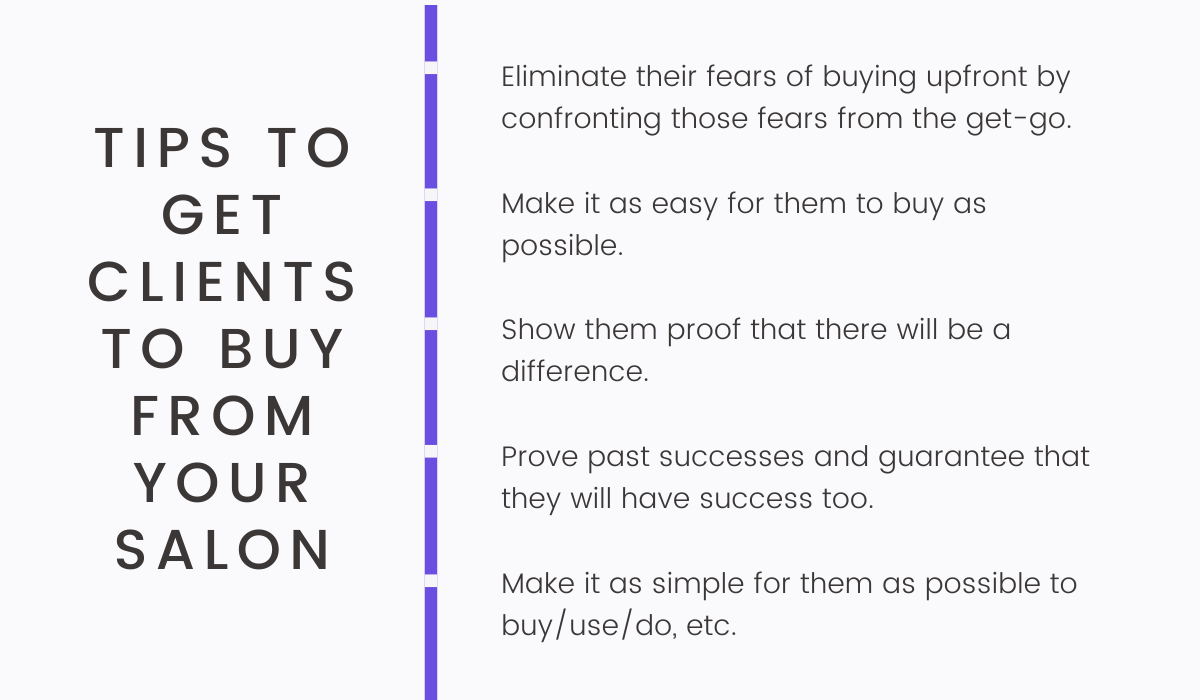
Source: SalonToday
For a more hands-on approach, prepare your team for sales activities through role-playing, and practice until they become confident in handling those scenarios. Other than that, reading materials, educational videos and other resources should also be readily available.
Keep training and developing your team, and you won’t have to worry about falling behind your competitors. In addition to that, a well trained staff is more independent, leaving you more time to concentrate on growing your business.
We’ve already mentioned how important clear communication is for establishing expectations. But to keep tabs on how everyone is doing, you should also regularly check in with your team members, either through group meetings or one-on-one conversations.
Regular meetings are your chance to share news, promotions, new policies or products, and much more. They also allow you to track progress and check whether you need to adjust any goals or strategies.
In addition to that, meetings are your way of including the staff in the decision making process.
After all, they’ll be the ones implementing those strategies and they can provide valuable insights into daily operations or even identify hurdles to achieving some of your visions.
Equally important, including your staff in your salon’s strategy makes them feel empowered and gives them a sense of personal investment.

Source: Smarp
We understand—managing a salon is a lot of work! It’s often difficult to set aside time for meetings, especially if your staff is fully booked and it seems like there are no critical issues to discuss.
But touching base regularly is crucial for a smooth operation, so let’s go over some basic principles of successful staff meetings.
First and foremost, to get the most out of your meetings, plan ahead. Set a date and the expected duration of the meeting (no longer than an hour). Then invite everyone on time so they can adjust their schedules, and prepare an agenda for all the items you need to discuss.
That way, you’re making sure everyone will be able to attend. Also, giving structure to the meeting will help you keep things on track.

Source: Instagram
Another good idea is to appoint different staff members to moderate every meeting.
This gives your employees a sense of responsibility and accountability, and helps diversify the sessions to keep everyone more engaged.
Even though the purpose of staff meetings is to discuss current business, they should also be an opportunity for the team to bond, so try to structure your meetings as an open conversation and have a few laughs and maybe even snap a photo for your Facebook and Instagram pages.

Source: Facebook
A great practice to use here is to change the scenery every once in a while and hold your staff meeting in a nearby café or even outside on a nice day.
Lastly, make sure to keep your doors open for anyone who’d like to have a one-on-one meeting. There will always be issues members of your staff won’t feel comfortable discussing, so it’s a good idea to create a safe space to raise issues privately. You can do that by communicating to your staff that you’re always available to talk.
To sum up, your team wants to feel included in the development of your business. If you neglect them, they might become disengaged and lose motivation, meaning their overall performance will suffer too.
Therefore, host regular and constructive meetings to stay on top of your salon operations and foster a strong team spirit.
As a manager, you have many responsibilities on your shoulders. Your job is to orchestrate a team of people and ensure everything gets done on time.
However, being in a leadership role means that whatever you do, the team will learn from your behavior and follow suit.
For Jen Lewis, salon operations director at Nurtur Salon, there’s no doubt that her own efforts must match her expectations from others. Just like any other successful manager, she emphasizes the importance of leading by example:
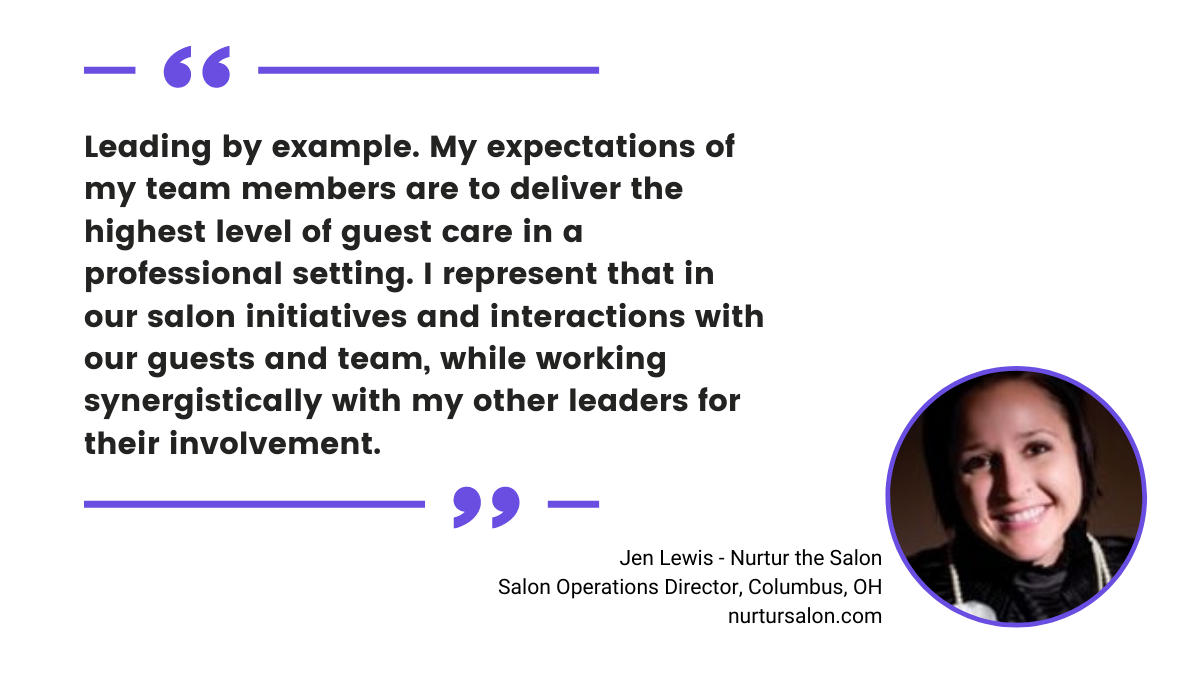
Source: SalonToday
Exemplary leadership extends to interpersonal relationships as well. Your staff will emulate the way you treat others in the salon, so unless you make an effort to foster a spirit of collaboration, your team won’t either.
So before you can hold your team accountable for their behavior, it might be a good idea to check whether you are practicing what you preach. For example:
Think of it from your own point of view: how likely would you try your hardest if your superior’s wouldn’t exhibit the same level of commitment to their work?
As a good rule of thumb, try not to display behaviors you don’t wish to see in the workplace.
The opposite is also true. Coming to work motivated every day and demonstrating your passion rubs off on your team.
When it comes to service-based and people-centered businesses, soft skills like responsibility, integrity, empathy, and communication are some of the best things you can demonstrate to your staff.
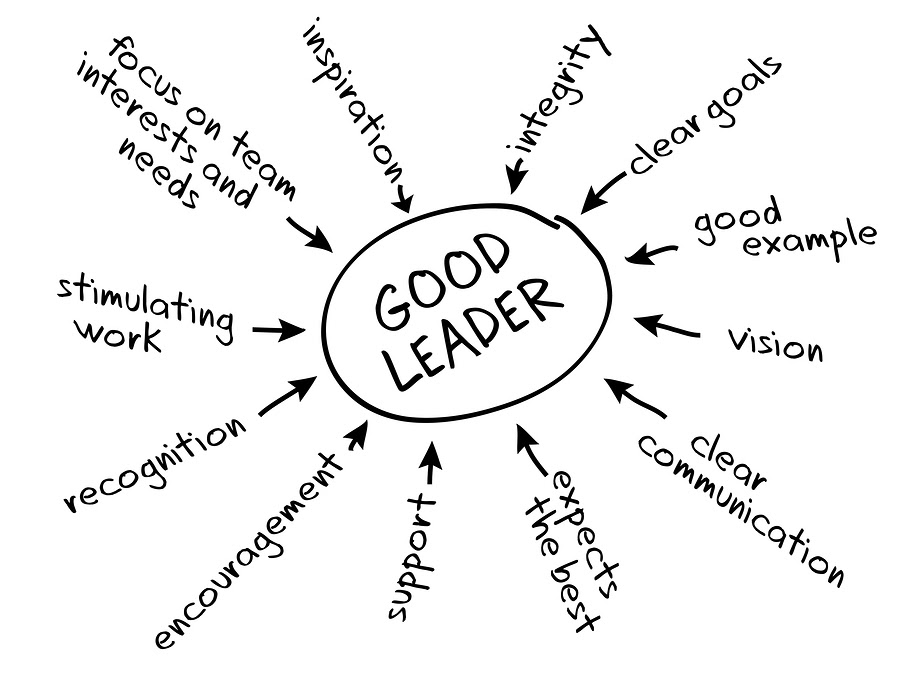
Source: TheApprenticeAcademy
Leading by example is one of the hallmarks of a good leader. It’s the best way to instill a good work ethic in your team.
That’s why it’s important to always start the workday by putting your best foot forward.
Oftentimes, this will be enough to motivate your team to do the same.
Neither cutting-edge tech nor expensive certificates will keep your salon afloat unless you have a happy and motivated team. And one of the most effective ways of keeping your staff contented is simply to recognize their hard work and extraordinary achievements.
As you can see in the chart below, a typical salon staff can be motivated in a myriad of ways. It might surprise you to learn that monetary incentives are not at the top of that list.
In fact, only 7% of employees say they are motivated by money. That means you can’t simply fix low engagement with a raise. Instead, most employees want to feel like they provide a valuable contribution to their workplace and get recognized for it.
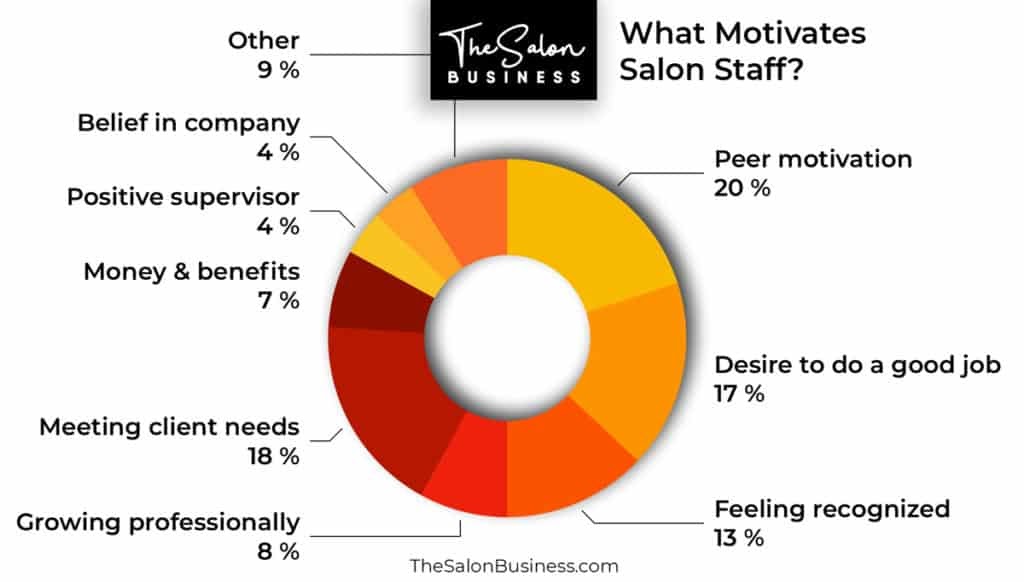
Source: TheSalonBusiness
Therefore, it’s a good idea to consistently acknowledge your employees’ efforts and good work. There are a couple of good practices to adhere to when doing that.
First of all, any expression of approval should be authentic and honest. It signals that you truly mean what you say instead of handing out compliments like candy, which means your feedback will have a deeper impact.
Secondly, the best way to give praise is to be as specific as possible. Did your employee expertly handle a demanding client? Then make sure to point out their great communication skills and professionalism.
This will go a long way to reinforce some of the desired behaviors in your place of work and help your employees understand what is expected of them.
Specific feedback also sets an example for other employees, which helps you cultivate an atmosphere of excellence and professionalism in your salon. That’s why it’s important to always keep in mind the most important rule of giving feedback: praise in public, criticize in private.
Staff recognition comes in many forms. For example, public expressions of appreciation such as social media shout outs show that you’re proud of your employees and want the world to know about it.
Check out the example below. That’s a good example of how to recognize the hard work on your employees’ part. It enumerates this massage therapist's many talents and is specific about details of her work and the stellar performance she brings to her job.

Source: Instagram
Workplace recognition also has the benefit of boosting your staff’s self-esteem and reputation among their peers. So it’s no wonder a study by Survey Monkey found that 82% of employees are happier when they are commended at work.
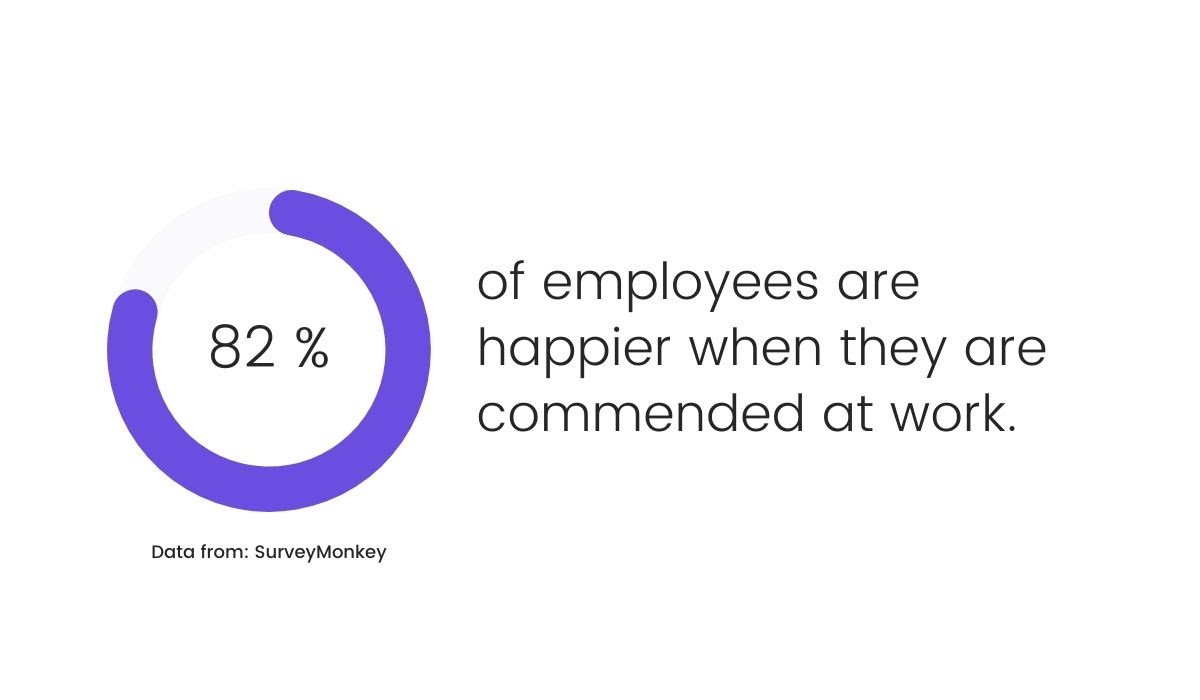
Source: Zoyya
Just keep in mind that staff recognition means more than just singing praises; it also means paying attention to what motivates your team members and showing interest in their personal well-being and professional growth.
In conclusion, workplace recognition, be it in the form of rewards, public praise, or opportunities for professional development, signals that you’re paying attention to your team’s strengths and are willing to help them achieve their goals.
And if you go the extra mile for your staff, they’ll follow you through thick and thin.
In your line of work, you communicate with many different personalities both inside and outside the salon. And you can bet that sometimes clashes and disagreements will occur.
Conflict can arise in many situations, either between you and the team or among team members.
There are also multiple reasons why conflicts happen. According to CMOE’s 2020 research, here are some commonly cited causes of conflict in the workplace:
You, as the salon leader, have the responsibility to effectively deal with all conflicts and problems as soon as they arise—no exception. Avoiding to do so may cause minor conflicts to snowball, ultimately eating up more of your time and money, as illustrated in the image below.
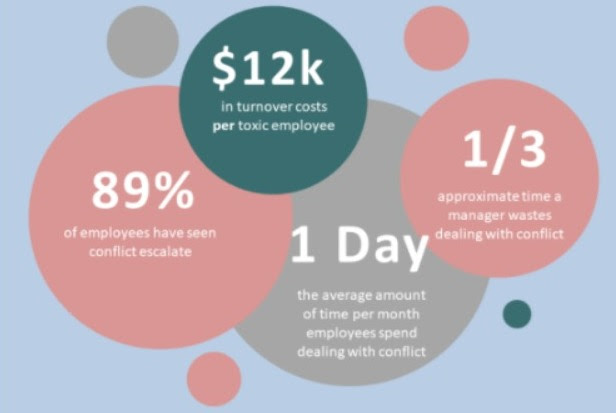
Source: MediatorSelect
The best way to handle disputes is to do your best to prevent them in the first place. If you insist on transparency, respect, and open communication, disagreements can be flattened out before they escalate.
Take, for instance, small everyday issues like borrowing and not returning equipment to their designated areas. If you create a place and procedure for storing items, everyone will know where to look for what they need.

Source: Zoyya
That’s just an example, so see if you can think of some conflict-inducing situations in your workplace and then brainstorm some solutions that may prevent those conflicts from ever arising.
Removing the cause of conflict itself will prevent the conflict from occurring and escalating. After all, you wouldn’t want team members to start bickering and accusing each other of theft if inventory problems persist.
However, you may find that animosities arise between team members no matter what you do. In that case, it’s important to practice some efficient conflict resolution.
Start by taking a moment to sit down with all parties to find out what’s happening. There might be different sides to the story, so don’t jump to any conclusions until you’ve had a chance to consider all perspectives.
Lastly, one of the most unpleasant parts of conflict management is deciding when to let an employee go. In such cases, consider long-term benefits for the rest of the team and be decisive.
Remember, letting unacceptable behavior persist sends the message that you have no authority or willpower to change the situation. In the worst-case scenario, avoiding taking action could cause your model employees to walk out instead of the culprit.
Data confirms this. In 2020, a toxic work environment was the main cause why 27% of employees quit, so it’s definitely a good idea to give workplace conflicts your undivided attention.
You won’t always be able to please everyone. However, when the well-being of your team is at risk, the one thing you absolutely shouldn’t do is to pretend the conflict doesn’t exist.
Effective salon staff management is a prerequisite for outstanding customer service, and therefore vital for your salon’s success.
Remember that the foundation of good staff management is effective and open communication, whether it’s to outline your expectations and rules of conduct, give praise, or resolve conflict. So do your best to interact with your team and find new ways to reach and motivate them.
Your team members trust you to help them succeed. Take good care of them, and they’ll take care of your clients and salon.
We never send spam or share your email address.
We use cookies to enhance your browsing experience, serve personalized ads or content, and analyze our traffic. By clicking "Accept", you consent to our use of cookies.Read our cookie policy